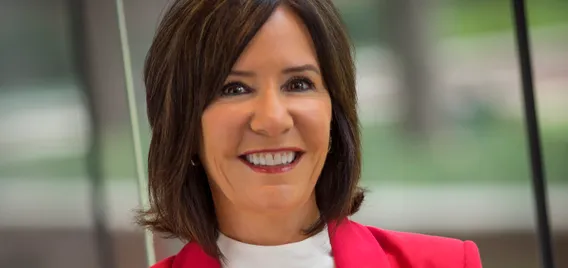While mentorship can be a pillar of any learning and development plan, it may have a key role to play in succession planning, according to one HR executive.
Jill Lyttle is executive vice president of human resources and leadership development at First Command, a financial services firm where leadership has formulated a succession-planning process that can begin four years before an executive’s retirement. Lyttle, who has worked at First Command for the last 12 years, will retire in October.
On-the-job training
In an email exchange with HR Dive, Lyttle shared how she and the company have worked with her successor, Shawna Dover, senior vice president of human resources and talent development, to prepare for this transition for quite some time already.
With “lame-ducking” a concern in many organizations, on one hand, and fear of backlash among leaders who express a desire for longer-term transition periods on the other, an open succession-planning process can be complicated, Lyttle said; “We were lucky to have identified an internal candidate and a culture that supported a long exit ramp.”
Lyttle said executives at First Command have found two to three years offered ideal timing for an orderly and well-thought-out transition from Lyttle to Dover. It also provided “the chance to wind down my projects, clean out files, share learnings and give her a chance to ask questions,” said Lyttle. Effective transitions happen over a timeline of at least a year, she added.
That said, there’s no perfect formula when it comes to timing in succession planning and transition, Lyttle said. Circumstances change, and plans do, too. “COVID side-tracked us,” she said, pushing a two-year succession plan to three years, but the protracted timeline helped the pair formulate a real-time “divide and conquer” pandemic approach with Dover leading the COVID-19 employee response, and Lyttle leading the organizational transformation. “It was really helpful to have an emerging leader in training as we made time-sensitive decisions,” Lyttle said.
When Lyttle and Dover agreed she was ready, they updated Dover’s development and transition plans, and began to meet with other members of First Command’s executive leadership on a quarterly basis to build business relationships.
The succession roadmap as a living document
At First Command, the two-year succession roadmap begins with an executive’s shared decision to leave the organization. Then, Lyttle explained, development and readiness plans are integrated to the roadmap, and operationalized by quarter with specific focuses on relationship-building, leadership development and executive education for the emerging leader. Identifying successors’ strengths and weaknesses are key components of this living document, Lyttle said.

During Q2, once Dover had confirmed her interest in stepping into Lyttle’s role, and the board of directors were made aware of the transition plan, a “live working plan” was developed, revisited and updated as needed throughout the transition process.
In Q3, Dover shadowed Lyttle in meetings, eventually started leading meetings and represented the company at external meetings. Lyttle said it was “during this important time, [that Dover] started to build relationships with other members of the executive leadership team through one-on-one meetings.”
Dover’s official promotion, announced internally, happened in subsequent quarters. An HR reorganization placed various responsibilities under her management, and she meets regularly one on one with the CEO. In the final quarter of the company’s succession roadmap, the new leadership member takes the lead, shadowed by the departing executive, Lyttle explained — in this case, Lyttle herself.
“Over the last six months, Dover has really assumed the role and is planning to move into my office before I depart, in an effort to make the transition seamless,” said the outgoing EVP. “It’s a sunsetting time for me to answer questions and for her to really shine, using all she’s learned.”












